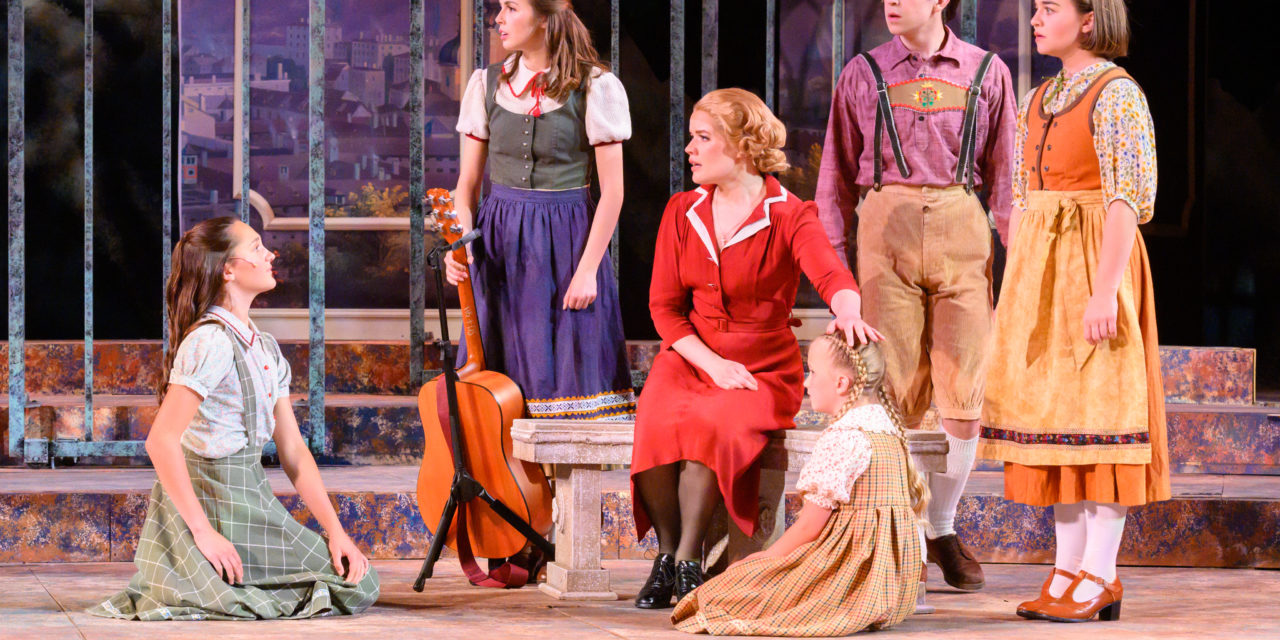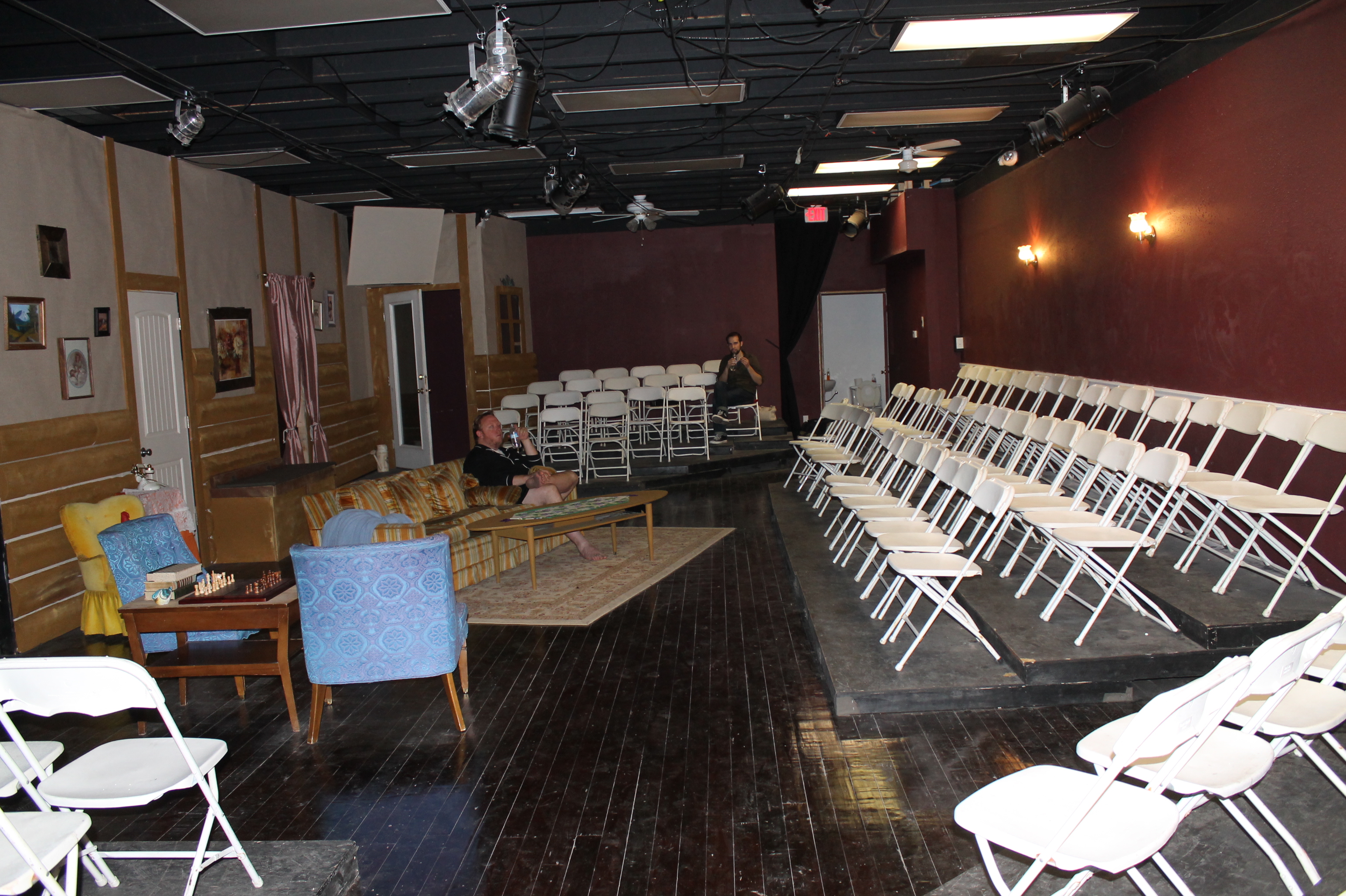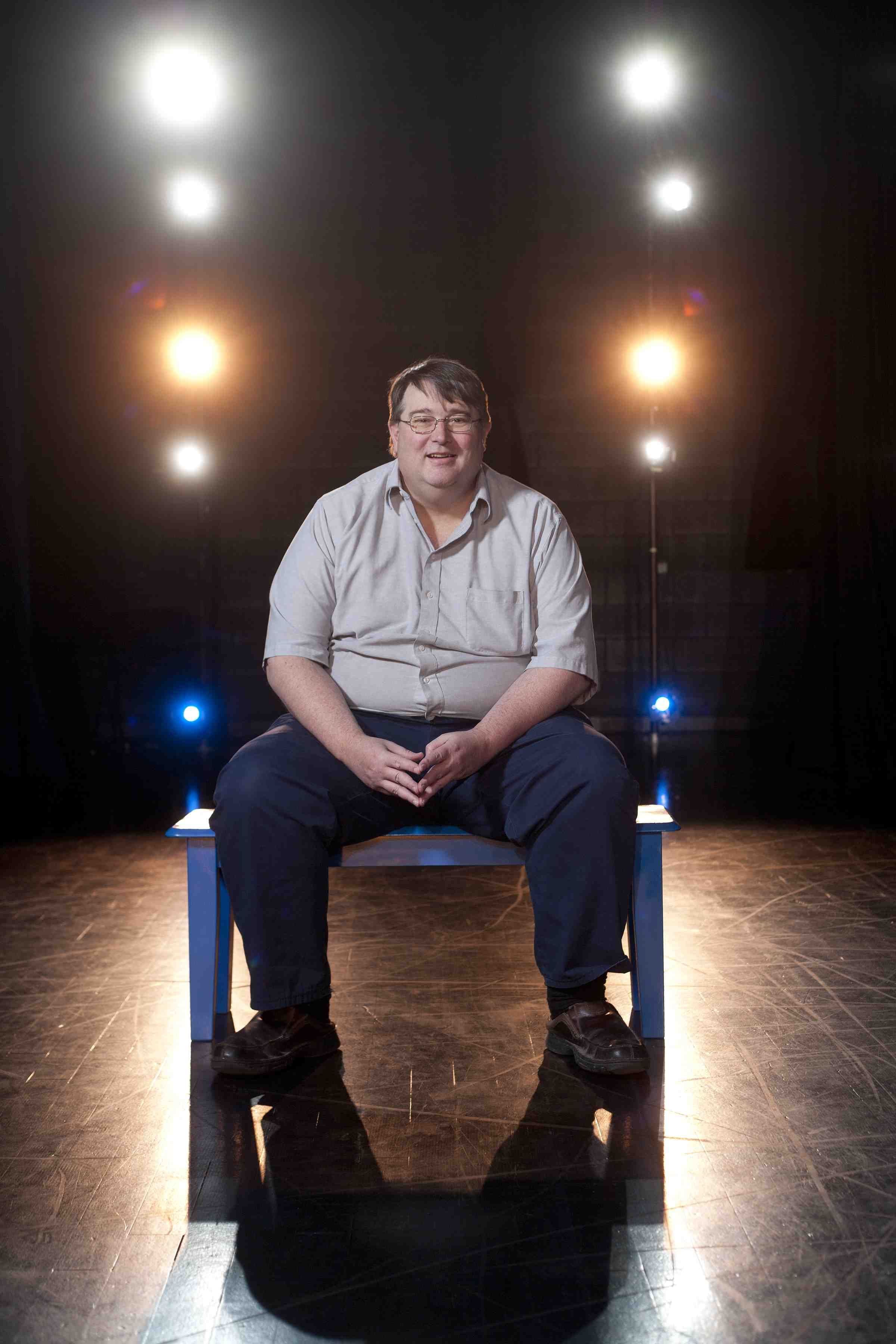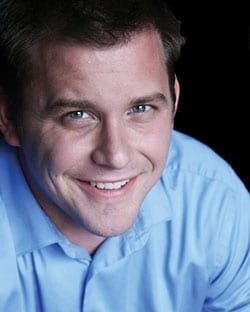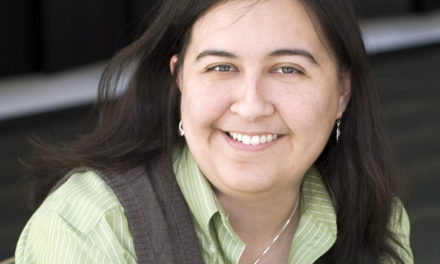SUNDANCE — Fresh off opening weekend and a rave review by UTBA, we interviewed The Sound of Music director Julie Heaton by phone about her process creating the show, and how overcoming problems led to fresh takes on the classic musical. (Note: This interview has been edited for length and clarity.)
UTBA: Hi Julie, congratulations on opening weekend. Thanks for making time to answer a few questions. How did this engagement begin?
Heaton: I think my name came up because I’m also a music director; sometimes it’s useful to have a director that can wear two hats. They reached out and asked me if I was interested. What happens next is they ask you to give a pitch—what would be you approach on this production—especially in this case when the title is so well known. And then slowly they start hiring the other team members and everyone comes into a collaborative space and starts planning things.
The director comes to the first production meeting with their concept—I’ll usually bring visual aids—then the first thing that happens is breakout meetings with the scenic designer. We exchanged emails and slideshows of things she was coming up with and I asked questions looking at her designs thinking of how I might stage scenes and how that would fit the concept. Then she takes that to the group, and when that’s approved, we move onto lighting and costume. It’s like a scaffolded process where you eventually bring on more and more.
UTBA: That is so interesting the set comes first, I would not have guessed that.
Heaton: That’s the biggest thing, how are we going to stage this thing and what color palette are we working with? We need the costumes to look good on the set. We need the lighting to look good on the costumes—scenic elements affect so much of the process.
UTBA: I thought the duality of the scenic design was lovely—how the movable windows and frescoed walls were flexible enough for indoor, outdoor, the abbey, the mansion.
Heaton: Yeah, that’s the goal. On a stage like that we don’t have curtains or a fly system, we can’t drop in a backdrop or cover up a scene change; everything is heavily influenced by the fact it’s a big open stage.
UTBA: When you’re imagining the scene, does it come visually first?
Heaton: That’s a really good question. I think that because my training is formed through the actor’s perspective, the shape of the scene takes place in my head when I figure out what the action is for the actors. Figuring out “Okay, there’s a shift here.” When Maria comes back at the beginning of Act II, and she’s ready to talk to the Captain and work through these new feelings she’s having—then she gets there and finds out that he’s getting married.
When I think about those scenes, I immediately jump into the role of the actor: like “She would definitely cross here because she’s uncomfortable and disappointed”—“he would definitely turn his gaze and follow her because he has no idea that she’s disappointed and hurt by this news.” You can do different things by creating distance between characters to show emotional disconnect between them.
The fun thing about our stage is playing down on the apron of the very first level gives some power dynamic play. When Maria is telling off the Captain, he’s on the upper platform and she’s looking up to him but bravely, boldly saying what she needs to say. But by the end of the scene, she’s on the platform and he’s down on the apron — so there’s a power dynamic shift there. She ends with the visual and metaphorical upper hand because she instituted some change in him. It’s fun to play with different level changes and distance between the characters.
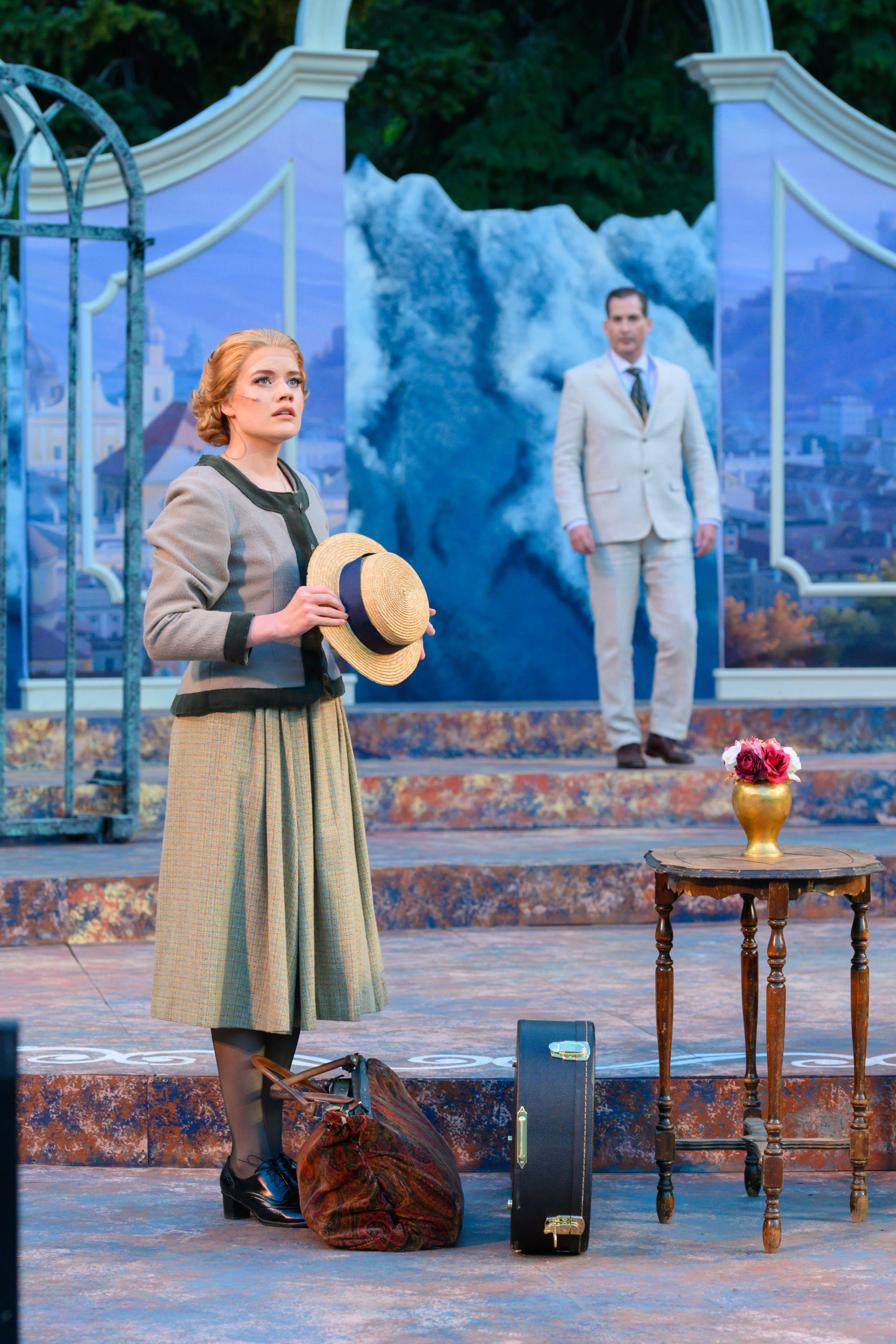
Photo by Suzy Oliveira.
UTBA: One scene on the apron I appreciated was the wedding scene. I loved how Maria and the Captain walked and kneeled toward the audience so they could see their expressions and experience that moment.
Heaton: Yeah, I love that moment.
UTBA: Could you speak to your thought process behind blocking that scene?
Heaton: I wanted her to walk down the aisle. But when I was getting ready to stage the scene, I was like “Okay, there is not a pastor listed as a character in here, how can I marry them without inventing a character and a new costume?” Because I want to keep the audience fully engaged, I was like, “I’m just gonna put the pastor in the audience! And this is cool because that way they’re kneeling at the altar towards the audience and the audience gets to be included.” So it was a solution to a problem that the more I thought about it, I got more and more excited about it.
UTBA: Well, you definitely succeeded, it was a cool moment.
Heaton: Thank you.
UTBA: I’ve been excited to talk about “Something Good,” which I thought was so effective. The last word of the song being swallowed up by that kiss…
Heaton: Yep! [Laughs]
UTBA: …how did that idea come about?
Heaton: We’re using tracks, and the orchestration of this particular company is gorgeous because they record it with actual orchestras. It’s not digital, and you can make edits. As we were working through the emotional beats and transitions of the song, it seemed like there needed to be a kiss there. But the way the natural beat fell for the actors did not line up well with the music. I submitted an edit—but it still didn’t quite line up.
So I asked the actors, “What do you think about not finishing that last word?” They tried it a couple different ways. One of the things we do intimacy choreography is we’re really specific with who closes the gap in that kiss. And [intimacy director and choreographer Jennifer Delac] said, “I feel Maria should be 70% closing that kiss.” That’s kind of cute because this is all brand new to her, I kind of like that.
So they tried it again. Captain started to sing and then she went in for the kiss, and we all loved it. Jen and I laughed, “Oh my gosh, that’s so cute!” I think it took us 20 minutes to evolve it. It’s so fun when you have a little problem to solve, and the solution turns out to be a really satisfying choice. I don’t know if I would’ve thought of that if I hadn’t initially set out to solve a problem. Through the collaboration with the intimacy choreographer and the actors, we all felt really happy with how that ended up.
So I was so excited when you brought that up, because I was like “I really like how that turned out, too!”
UTBA: Well, everyone knows the last word to the song, right?
Heaton: Yeah, that’s what I figured.
UTBA: That little surprise was just lovely. I’d like to talk about the line between choreography and direction. One thing I loved about the choreography was its character moments, like Kurt blowing the kiss and the husband gets upset… [Heaton laughs] …and in “No Way to Stop It” when Captain waves his hand dismissively and Elsa grabs it and do-si-dos with him…
Heaton: [Laughs] Yeah!
UTBA: Are those character moments by the choreographer or are they developed in tandem with you?
Heaton: Some of those Jen came up with—like the do-si-do with the Captain, that’s all Jen. The actor playing Kurt—Jack Harper—actually came up with that kiss, then he asked the choreographer if he could do that, and she said, “I think so!” Then two rehearsals later, the husband on the couch got mad. Then Jen and I look at each other and she said, “Is that too distracting or is that fine?” and I said, “No, I think that’s fine.”
There are moments when the actors put their own touches and ideas in there. Our job is to make sure it’s consistent with the storytelling and doesn’t distract.
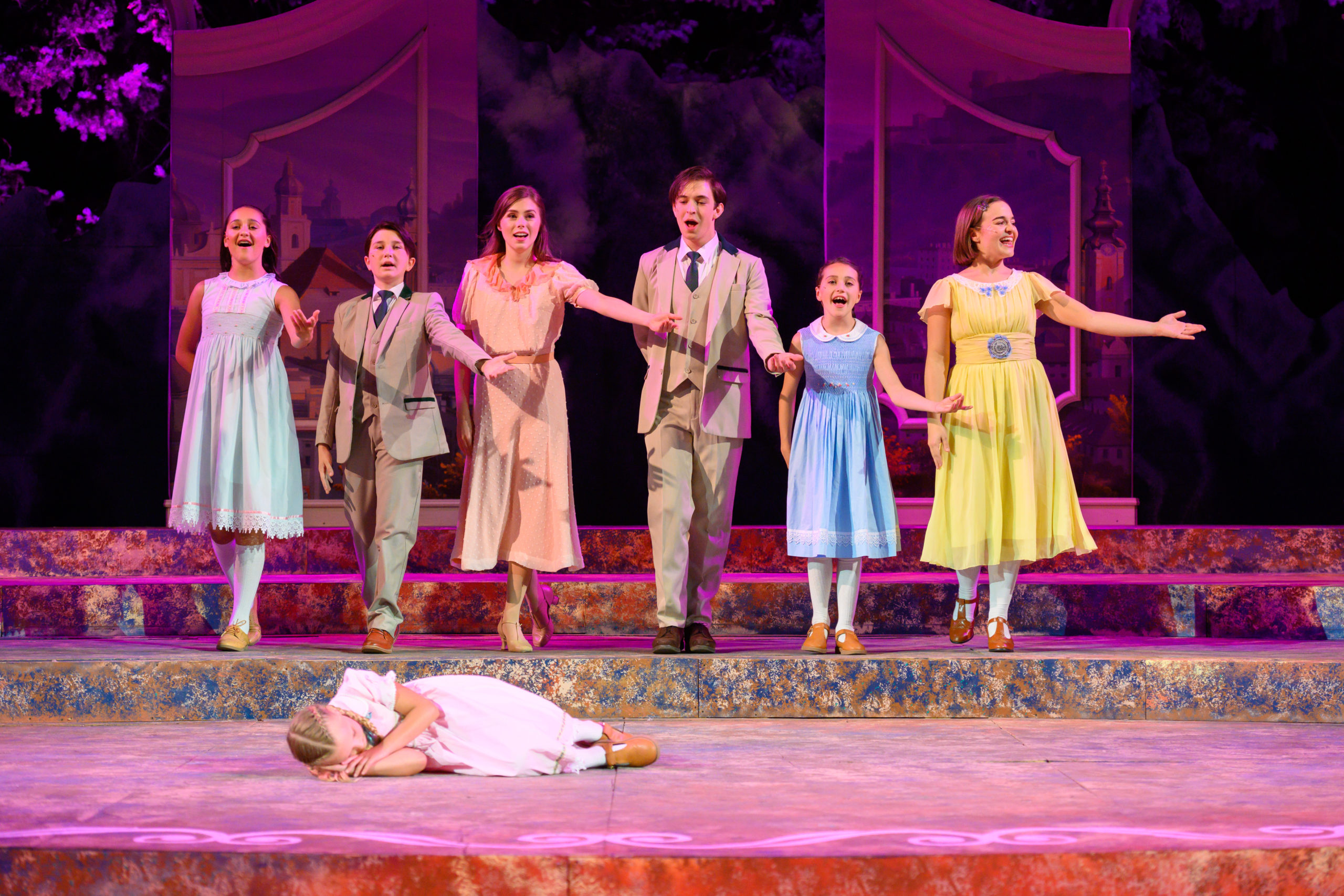
Photo by Suzy Oliveira.
UTBA: One thing that struck me is the bad guys had actual dramatic heft. It seemed like not having German accents gave the actors room to create a more relatable menace instead of being caricatures. Could you speak to your approach to the villains?
Heaton: My initial approach was I didn’t want to perpetuate stereotypes that people with accents are scary. The things the Nazis did are scary enough; we don’t need accents to make them scary. If it’s not necessary, and it’s not demanded by the script, then I want to take a good hard look at it. What purpose does it serve?
In this case, our characters are from Austria. You can rationalize the German accents because Germany and Austria are different countries, and having them do German accents just highlights that they’re different from the people you’ve been watching and have fallen in love with through the story.
But they’re also neighboring countries with neighboring languages, and so if you don’t do the accent you get the result like you’re talking about: that’s kind of scary because they seem human, they seem normal. Like your next-door neighbor. I love how you put it, like it’s almost scarier that they are like your next-door neighbor and they don’t sound like they’re from a far far away land.
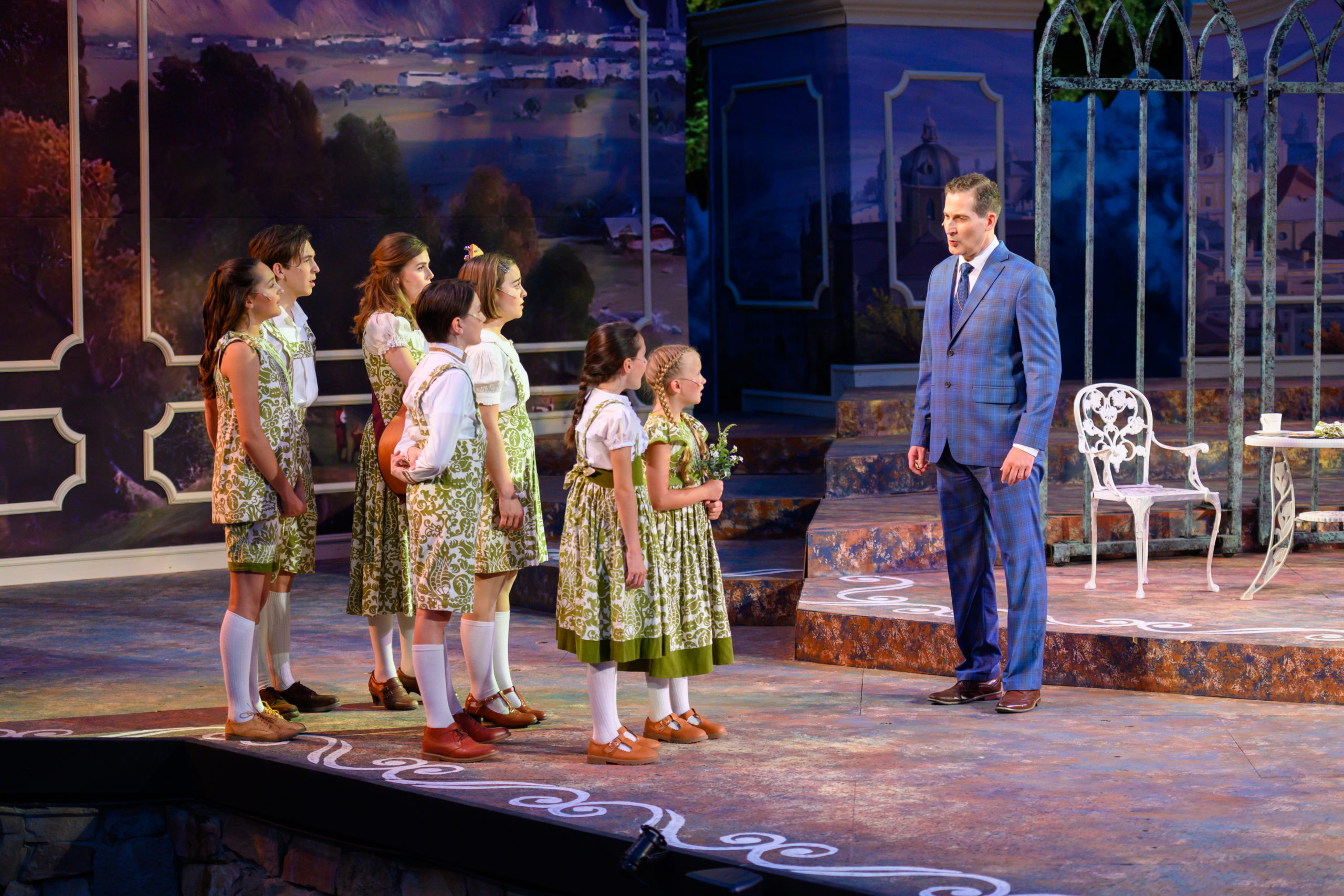
Photo by Suzy Oliveira.
UTBA: What was the process like as musical director? To me, the show sounded like a soundtrack.
Heaton: That’s very kind of you. I spent a couple years in the Tabernacle Choir at Temple Square. Singing under Mack Wilberg, the master of choir sound, I kind of developed a higher expectation of blend. My last job prior to UVU, I was the head of the musical theatre program, and one of my primary responsibilities was music direction. So, I’ve had a lot of experience with listening to blend, pairing voices, and getting familiar with different voice types.
It starts with figuring out the voice quality that I want and picking the ones from the audition that match that best. Then being really nitpicky about being sure cut offs are together, the articulation and diction are sounding good, putting some dynamic in there, teaching the singers how to jump right in with similar tempos—we spend a lot of time turning that into muscle memory.
With the kids, it was particularly challenging because I got a wide range of ages and experience levels—that was just a lot of consistency and extra rehearsals. The vowels have to be tall, you gotta move the notes right together. There’s no sliding around, no scooping. With a show like this, I’ll be really specific and say, “No vibrato on that note” and run up to the sound mixer and say, “bump this person’s mic,” or “pull that person’s mic back a little bit.” You can really be that specific so the blend is exactly like you want it. The mixer builds it as a cue; they have cue numbers just like everyone else. If you have a really nice board, you can get some really consistent sound.
UTBA: Your director’s note says you began as an actor. How did you transition to directing?
Heaton: When I was younger and performing, a couple of theaters offered me an opportunity to choreograph. I’m not a major dancer, but my approach to choreography is pictures—creating stories and concepts and ideas through pictures. So it started in that realm.
The first real directing assignment I had was at Salt Lake Community College as an assistant to the director. He pointed out, “You’re more of a director than you think” [as well as how] some of the elements I’d handled could work in future shows. When I became a full-time professor, I had to direct three to four shows a year. By doing that and having my work evaluated by professors and other institutions, that’s how I fell into directing.
UTBA: For those interested in exploring directing, what advice would you have for them?
Heaton: Well, there’s always the educational, institutional route. They offer MFA degrees in directing, and there are some bachelor-level degrees in directing emphasis. The other way that really works well is just talk to directors that you know and ask to assist them: do a couple unpaid internships, network a little, get to know people, put your name out there, say, “I assisted so-and-so on this show and I’d be interested in directing something myself.”
UTBA: It’s been so great to talk to you, Julie. Congrats on a great show, hope you have an awesome run.
Heaton: Thank you so much it’s a pleasure talking to you. It’s fun to geek out and talk about my process, so I appreciate the opportunity.

